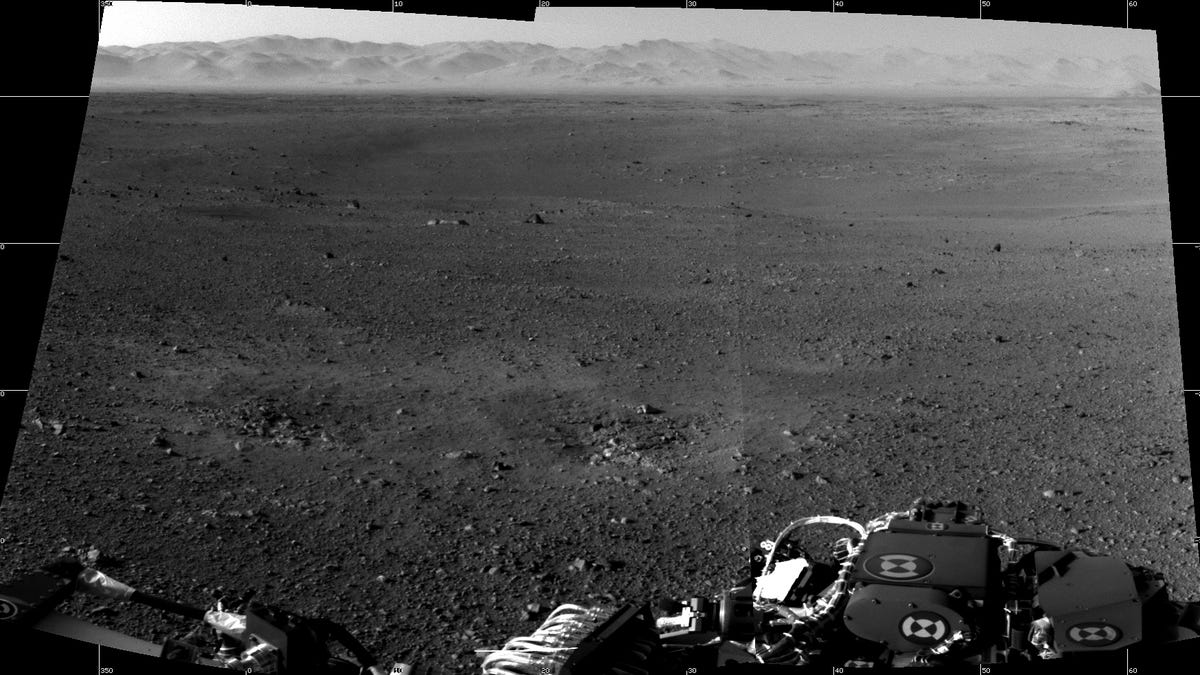Curiosity sends back first full-resolution images
Less than three days after its arrival on Mars, the big rover has unpacked its navigation cameras and is improving on the quality of the snapshots it's sending homeward.
Not for the first time, and surely not for the last, we bring you another first from the Curiosity rover.
NASA has now released the first full-resolution images from Curiosity, which arrived on Mars late Sunday in a dramatic landing following an eight-month, one-way commute from Earth. The initial images sent back from the newly arrived rover, also known as the Mars Science Laboratory, were low-res images, the better to get them back quickly and to help confirm that Curiosity was all in one piece.
The two just-released black-and-white images, which have been stitched together to show as a single photo, reveal a barren, rocky terrain stretching away toward the edge of the Gale Crater in which Curiosity sits. In the foreground of the photo you can see a bit of the gear on one edge of the rover's chassis.
The images were taken by Curiosity's navigation cameras, located on the rover's mast. NASA describes that bit of gear this way:
The navigation camera unit is a stereo pair of cameras, each with a 45-degree field of view that will support ground navigation planning by scientists and engineers. They work in cooperation with the hazard avoidance cameras by providing a complementary view of the terrain.
Other first photos just released include the first image from the navigation cameras, period, the first 360-degree panorama view, and a self-portrait. You can see them here:
And has the Curiosity mission helped to change the public's image of NASA's engineers from pocket-protector-geeky to mohawk-wearing geeky-cool? CBS News' Bill Whitaker offers some perspective:


